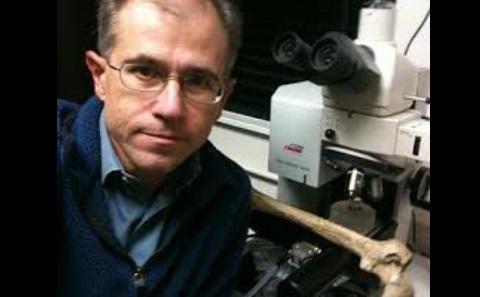IfLS Imaging Seminar: Optical observations provide hints and evidence for the underlying effects in basic and applied bone biomechanics studies Event

- Time:
- 16:00 - 17:00
- Date:
- 30 June 2016
- Venue:
- University of Southampton, Highfield Campus, Building 85, Room 2207
For more information regarding this event, please email Adam Corres at IfLSAdmin@soton.ac.uk .
Event details
Speaker background: Professor Peter Zioupos of Cranfield University is an imaging specialist whose work includes the high-definition forensic scanning of the mummy of King Tutankhamen, which revealed new insights into the pharaoh's medical conditions, death and hasty entombment.
Abstract: Biomechanical studies of the skeleton crucially revolve around the question of what bone is and how bone performs; and there you have the first conundrum, the ‘perceived’ mechanical properties of bones depend on: (1) the material characteristics; (2) the environment; (3) the imposed loading conditions.
Material characteristics are described by the mechanical behaviour and are linked to the structure so as to derive structure/function relationships. These are contingent on the ambient conditions (the environment) and the loading rates (mostly).
It is a fallacy to believe that a certain set of numbers – such as modulus of elasticity, stress at yield, fracture toughness and so forth – can tell one what bone is at any point in time; especially when time, and the window in time where events happen, is one of the major factors at play.
Bone can be seen to be very tough if it comes from a certain species, it is well hydrated, of a slightly lower mineral content, a certain architecture and it is loaded quasi-statically. On the opposite side of the spectrum, certain bones when thoroughly dry and/or fully mineralised, or at high strain rates, are nothing but brittle.
Quite often the recorded material data (forces and displacements or the normalised variables in stress and strain) goes only as far as telling you of how the material performs, not how it gets there! One needs corroborating evidence and, very much like from the time of Isaac Newton, careful observation is the key. Video recordings, microscopy examinations, x-ray scans and synchrotron radiation studies are some of the examples in the EM spectrum by which one (the observer) connects with the other (the subject of interest). In this talk we can visit various examples to illustrate this premise and home in on the message.
Speaker information
Professor Peter Zioupos,Cranfield University,Professor of Forensic Biomechanics, Forensic Engineering & Science http://www.cranfield.ac.uk/Peter-Zioupos http://www.cranfield.ac.uk/CFI http://www.cranfield.ac.uk/cmmr http://www.cranfield.ac.uk/Biomechanics-laboratories http://www.forensicseuropeexpo.com/page.cfm/action=seminar/libID=1/libEntryID=56/listID=2